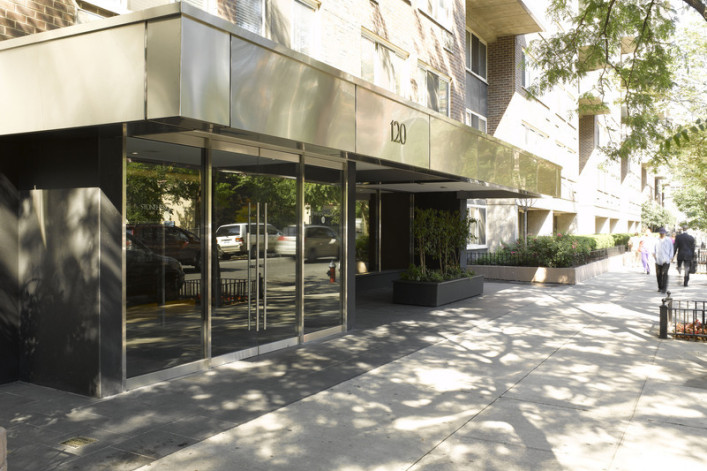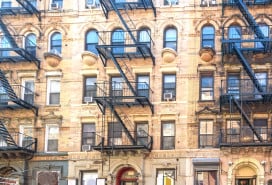4 ways the Upper West Side gym debacle could play out

Stonehenge Village, a 417-unit rental building on the Upper West Side originally built to create affordable housing for middle income residents, ignited a firestorm this week when it came to light that a new gym would be for market-rate tenants only, and the 60% of building residents who pay rent-stabilized rates would be out of luck.
Politicians condemned the so-called amenity segregation, with State Senator Bill Perkins calling it a “form of apartheid,” City Council member Mark Levine saying it “recalls memories of the pre-Civil Rights era,” and Public Advocate Letitia James vowing to file a discrimination complaint with the New York State Human Rights Division, as DNAinfo reported.
Stonehenge Village's owner, Stonehenge Partners, says it hasn’t broken any rules: “We are a responsible building owner and manager and we want to assure all interested parties that everything we have done regarding this matter is in full compliance with all laws,” a spokesperson says.

(Photo credit: StreetEasy)
Regardless, the situation can’t help but spark questions (and comments, particularly from readers of West Side Rag) about income disparity in New York City—which sometimes feels like a luxe fortress for the 1 percent.
So how will it all play out? While we don’t have a crystal ball, we spoke with attorneys who laid out four possible resolutions. (We also reached out to a couple of lawyers who only represent tenants, but they didn’t get back to us by press time. If you’ve got another perspective, let us know in the comments or send us a note.)

A sign posted on the gym door has since been taken down (Photo credit: DNAinfo)
1. Rent-stabilized tenants hit the courthouse
Litigation is the American way. It’s possible the rent-stabilized tenants will file a discrimination lawsuit or an appeal to a regulatory agency challenging the ban as an unfair rent practice.
“This is America, and in America anybody can file a lawsuit for anything against anybody,” says Jay Itkowitz, a real estate attorney with Itkowitz PLLC and a legal expert for LandlordsNY.
But it’s unlikely they’ll win in either venue, said the lawyers BrickUnderground spoke with.
Landlords are legally obligated to provide the same services to rent-stabilized tenants that existed when a unit became stabilized, as well as basic services (heat, hot water, a kitchen), but they’re not required to provide them with new “ancillary” services.
Another strike against the rent-stabilized tenants is that being poor is not a “protected class,” like race, religion or gender. While it’s illegal to discriminate based on the source of your income, it’s perfectly legal to discriminate based on the size of your income, notes Michelle Maratto, an Itkowitz attorney who has represented both tenants and landlords.

A market-rate one-bedroom apartment currently available for $3,185/month (including a month of free rent)
In Stonehenge Village’s case, there is one wrinkle: the building was formerly part of the Mitchell-Lama middle-income housing program. When it came under private ownership in 2006, the existing tenants signed an agreement to maintain their rent-stabilized status. It’s conceivable that some language in the agreement would affect this situation, says attorney Dean Roberts of Norris, McLaughlin & Marcus, but not likely.
“I strongly suspect the landlord is completely within his rights to do it,” Roberts says, adding, “As a knockdown, drag out legal fight, [the tenants] lose, in my view.”
2. Politicians back up their rhetoric
Even if the law allows Stonehenge Village to exclude rent-stabilized tenants, you could always change the law. Elected officials at the city or state level could try to pass legislation that would favor rent-stabilized tenants in such a situation.
“Whether that is constitutional, whether the real estate industry would not fight that tooth and nail, whether it would ever be passed ... that’s a whole different range of questions,” Itkowitz says.
3. Stonehenge backs down
Given the uproar over the gym, Stonehenge Partners might scrap the ban altogether. But again, that scenario isn’t likely either.
For one thing, the 15-by-20-foot gym is probably too small to accommodate all the tenants. And for another, it’s not in the landlord’s interest to keep the rent-stabilized tenants happy.
Landlords mostly lose money on rent-stabilized tenants. When those tenants leave, not only does the rent on their units double or triple, but the value of the building goes up $10 to $15 for every dollar of extra rent, Itkowitz says.
Indeed, as the management company’s spokesperson notes, “our ability to attract residents at market rates, which in this Upper West Side neighborhood are as much as three times the average paid by our rent-subsidized tenants, and to maintain high occupancy is critical to the overall financial health of the building which is in every tenants‘ interest.”
4. Market-rate tenants save the day
If you’re a market-rate tenant at Stonehenge Village, where a one-bedroom is listed for $3,450 a month, you may want to bring a personal trainer or friend along when you work out. And why shouldn’t that friend be one of your (rent-stabilized) neighbors?
A question like this may make the building’s policy unenforceable from a practical standpoint, not to mention that market-rate tenants may boycott the facility altogether if they perceive it as unfair, notes Itkowitz.
Related:
Are condo renters entitled to use the new gym?
What is a rent stabilized apartment anyway?
More Mitchell-Lamas on the way? The good, the bad and the possibly problematic
























